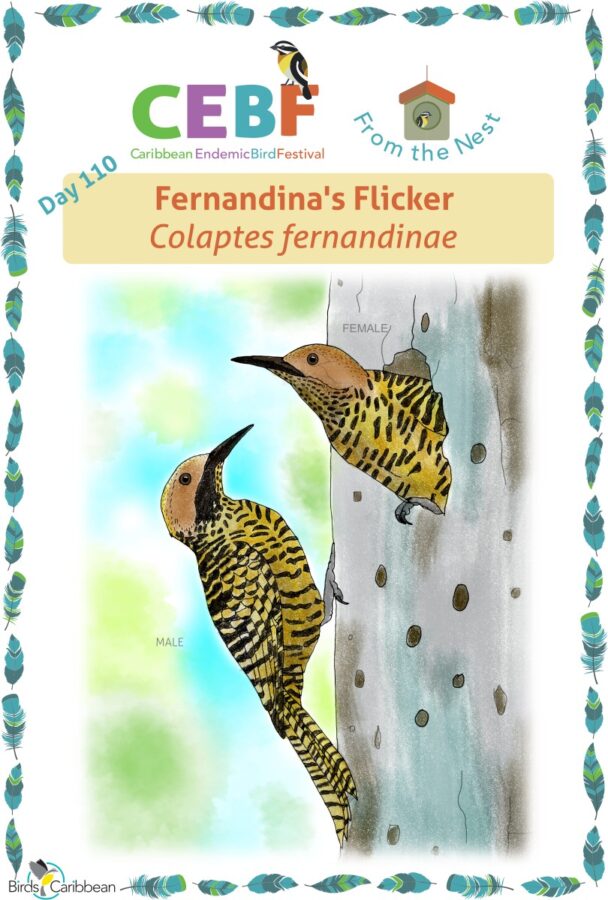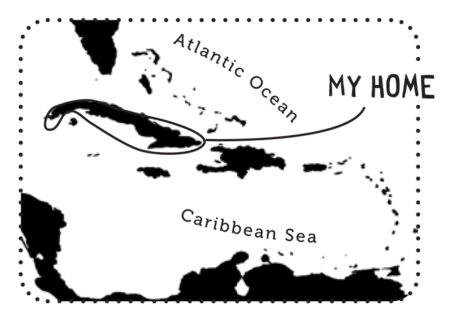Celebrate the Caribbean Endemic Bird Festival (CEBF) with us! Our theme in 2023 is “Water: Sustaining Bird Life” highlighting the importance of water conservation to both humans and birds. Have fun learning about a new endemic bird every day. We have colouring pages, puzzles, activities, and more. Download for free and enjoy nature with your family at home.
Endemic Bird of the Day: Fernandina’s Flicker
Walking in the Cuban countryside you may find an extraordinary bird, busy among the grass and leaves of the ground—the Fernandina’s Flicker! You may be wondering “on the ground?!” And rightly so! When we think about woodpeckers, we don’t expect to find them on the ground, but this is one of many ways that this woodpecker is unique.
Endemic to Cuba, the Fernandina’s Flicker (Colaptes fernandinae) is the largest woodpecker in the country, with an impressive size of 33-35cm (the Ivory Billed Woodpecker is larger, but sadly it may be extinct). Its plumage is mustard yellow with fine black barring that becomes thicker on the upperparts. Its head is cinnamon tan with fine barring from forehead to nape; the eye is dark brown, and it has a strong black beak. The male has a solid black stripe of feathers in the malar (cheek) region, this is absent in the female. It is the only woodpecker on the island that lacks red color.
Specially adapted to open vegetation ecosystems with few trees, the Fernandina’s Flicker prefers savannas with palms and open forest. The soil offers the main source of food, and our flicker does not hesitate to get some dirt on its beak! It excavates the ground or searches through the leaf litter for insects, larvae, ants, and any other juicy delicacies. It will also examine trunks and bark of trees for food.
As with all woodpeckers, they have very long tongues that they keep rolled around their skull. The tongue has a special tip, serrated, sharp, and really sticky, which they use to probe under bark and in holes to reach their meals. Locally they are called Ground or Dirty Woodpecker, and Ant-eater.
In the mornings and during the breeding season the Fernandina’s Flicker constantly repeats its unmistakable call “kía-kía-kía-kía-kía” and a long sputtering “kirrrrrrrrr.” They become very active and it is common to see them defending their territories and chasing each other. Sometimes pairs will perch on branches and trunks, raising their heads up and down in courtship while making their typical sound “flíck-flíck-flick.”
The breeding season is from February to June. They excavate cavities almost exclusively in palm trees and lay 4 to 5 white eggs. Sometimes they form loose colonies of a few pairs on palmettos, and even share palms with other cavity nesting birds like the Cuban Parakeet or Cuban endemic owls.
The Fernandina’s Flicker is one of the rarest woodpeckers in Cuba. Classified as Endangered by the IUCN, it is restricted to small areas and its population size is declining. Its presence strongly depends on the native Cuban palm savanna ecosystem, which has been reduced or lost due to causes such as cattle ranching, invasive species, and logging.
In addition, due to a scarcity of palm trees and consequently nesting sites, the flicker faces strong competition from the West Indian Woodpecker. The woodpecker is very territorial and will harass flicker parents, destroy their eggs, and take over their territories and nest sites. Thus, it is very important to preserve Cuba’s palm savanna habitats. This is the best way we can help this majestic woodpecker to continue soaring through the skies of the Cuban countryside. Learn more about this species, including its range, photos, and calls here.
Colour in the Fernandina’s Flicker
Download our West Indies Endemic Bird colouring page. Use the photos below as your guide, or you can look up pictures of the bird online or in a bird field guide if you have one. Share your coloured-in page with us by posting it online and tagging us @BirdsCaribbean #CEBFfromthenest
Listen to the call of the Fernandina’s Flicker
The calls of the Fernandina’s Flicker include a loud and rhythmic “flick, flick, flick, flick…”and “kía-kía-kía-kía-kía” and a long sputtering “kirrrrrrrrr.”
Puzzle of the Day
Click on the image below to do the puzzle. You can make the puzzle as easy or as hard as you like – for example, 6, 8, or 12 pieces for young children, all the way up to 1,024 pieces for those that are up for a challenge!
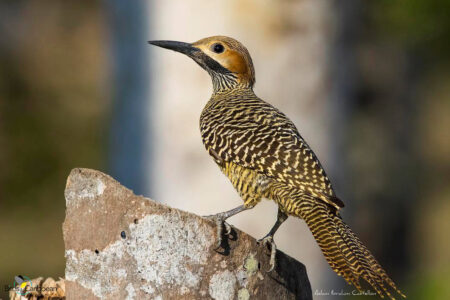
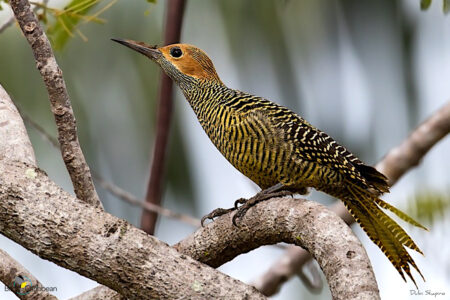
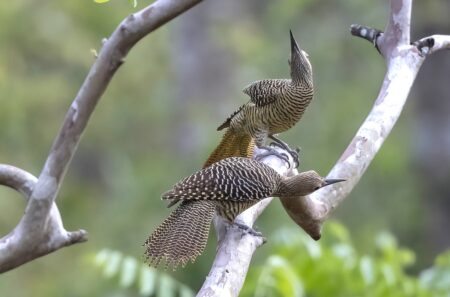
Activity of the Day
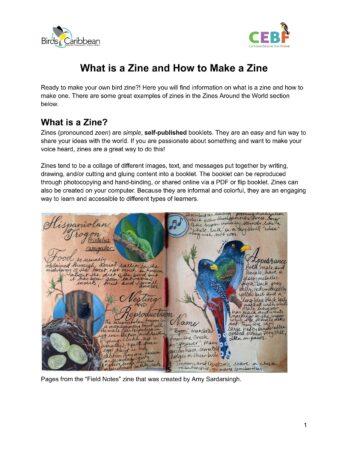 FOR KIDS: Our Caribbean Endemic birds are beautiful and fascinating – why not take inspiration from these birds and make you own ‘Zine’ to be included in our BirdsCaribbean Zine library?
FOR KIDS: Our Caribbean Endemic birds are beautiful and fascinating – why not take inspiration from these birds and make you own ‘Zine’ to be included in our BirdsCaribbean Zine library?
What is a Zine? Zines (pronounced zeen) are simple, self-published booklets. They are an easy and fun way to share your ideas with the world. If you are passionate about something and want to make your voice heard, zines are a great way to do this!
For this year’s Caribbean Endemic Bird Festival why not create a zine based on our 2023 theme? Water: Sustaining Bird Life. We encourage you to do some research on your topic through online searches, reading books in the library, your own personal experience with the bird, and speaking with local experts. BirdsCaribbean will also feature an endemic bird each day on its website and social media accounts. You can find more information, suggested topics, a list of the materials you will need and ideas for the best way to create your Zine in our downloadable, detailed instruction sheet.
You can also take inspiration from this beautiful Zine all about today’s Endemic bird created by Arnaldo Toledo from Cuba. This was the winner of our Grand Prize for adults (ages 16 and older) of our 2021 Zine competition. “Apuntes de campo Carpintero Churroso” (Field Notes Fernandina’s Flicker).
See all the winners from 2021 and find links to more Caribbean endemic bird Zine here:
FOR KIDS AND ADULTS: Enjoy these videos of a Fernandina’s Flickers in the wild! You can see a female foraging on the ground; A male calling at a nest-hole and a male and female together at a nest-hole.

